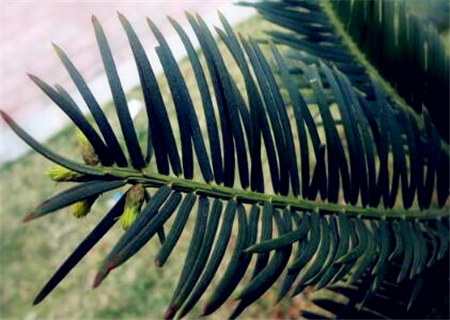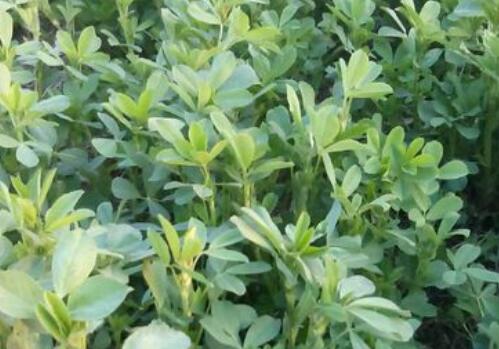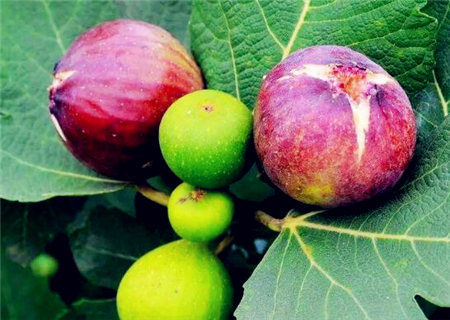The wild plant Cephalotaxus chinensis costs 120000 US dollars per jin. How do farmers grow it? When will it be ready to plant? Different from the yew.
At a time when there are no more special treatments for cancer, Cephalotaxus is even more precious, with a price of US $240000 per kilogram on the international market. So how do farmers grow it? When will it be ready to plant? What's the difference between yew and yew?

When will the Cephalotaxus be planted?
One. Selection of seedling site: Cephalotaxus chinensis seedlings are best planted in deep soil layer, loose structure, humus-rich and well-drained soil, and can also be interplanted in coniferous or broad-leaved mixed forest in woodland. The germination rate of 80 jin per mu of Cephalotaxus seeds / jin is about 90%.
Two. soil preparation and fertilization: the newly reclaimed land is more fertile and can not be fertilized. The old land must be reorganized, usually 20-25cm deep, 15-20cm high, wide 1.2cm, unlimited in length. Apply an appropriate amount of mature base fertilizer, and then use 1.5 kg of phoxim and ferrous sulfate per mu to eliminate underground pests and adjust soil pH. Two weeks before sowing, disinfect the seedling border with 0.3% potassium permanganate or formalin solution. Pour 20ml 30cm thoroughly, seal it with plastic film after pouring, uncover it a week later, dry for 5 days and sow seeds. Both on-demand and on-demand are available.
Three. Seed germination: (1) New seed germination sowing method: before sowing the seeds, first disinfect the seeds with 1% CuSO4 solution of 2% concentration for 5 minutes, then rinse the seeds with water, then soak the seeds with 50 degrees liquor and 40 degrees warm water (1:1) for 20 minutes, soak the seeds with 0.05% gibberellin for 24 hours, induce hydrolase production, break seed dormancy, and promote its early germination. (2) burying and sprouting every other year: the seeds are soaked in warm water (about 45 ℃) for 3 min for 4 days. When the kernels become milky white, disinfect them with 1% Mui 2% cupric sulfate solution, then mix well with three times wet sand (60% humidity fine sand) into grass bags or wooden boxes and put them into underground cellars. The cellar should choose the area with high terrain and good drainage, the depth of the cellar is about 1.5m, strictly prevent rodents from entering. In addition, the pit temperature should be checked frequently. The summer temperature should not exceed 20 ℃. When the window temperature is high, you can set up a shade shed on the window or open the window door at night to cool down. Using this method, the seeds are generally stored in autumn, and all are buried in the second year. In the third spring, the seeds are taken out and exposed to sun for 4 days. The seeds can be sown when the radicles of 20%, 30% of the seeds are germinated. (3) the seedling effect of Cephalotaxus seeds is slow, which takes 2-4 months. at present, the technical problems such as long dormancy of Cephalotaxus seeds and rooting of cutting seedlings have been overcome, and high quality seedlings have been selected. (4) overwintering burying and sprouting method: this method is suitable for sowing seeds with picking, that is, the fresh seeds are removed in autumn, then soaked and disinfected, and then buried in sand (the method is basically the same as the other year burial method). The seeds were taken out 20 days before sowing in the next spring and placed in the leeward to the shady slope, covered with plastic film to increase temperature, and pay attention to watering to keep moist, when part of the seed shell split can be used for sowing.
Four. seedling management: (1) arch film seedling protection: if you sow seedlings densely with flat film, you should often spot check the seeds, remove the cover when the radicle is white, and change the flat film to arch film to moisturize and accelerate germination. After changing the arch film, it is necessary to adjust the temperature and humidity, lift the agricultural film at both ends of the shed on a sunny day, cool down, breathe, and cover flat at night. 3Mel spray water on the seedlings once every 4 days, keeping the humidity of the seedbed 55% Murray 60%. Rodents should be strictly guarded against. When the seedling has 2 leaves and 1 heart, the film should be opened to refine the seedling. (2) sparse seedling and sparse planting: the amount of seeds used for raising Cephalotaxus chinensis seedlings is generally about 200seeds per square meter. If the seeds are sown too densely, the seedlings should be thinned and transplanted according to the row spacing of 15cm × 20cm cm. (3) weeding and topdressing: ploughing and weeding 2mi for 3 times, combined with topdressing 10kg of urea and 5kg of potassium chloride per mu, irrigating water or spreading on rainy days. 0.25% urea and potassium dihydrogen phosphate can also be foliar sprayed. (4) pest control: Cephalotaxus has strong insect resistance, few diseases and insect pests, and occasional spiders or aphids, which can be controlled by pesticides such as dichlorvos and dimethoate. (5) 2-year-old bed seedlings: mature animals could be treated with dilute feces and urine for 5 times and ammonium sulfate for 2 times. Rinse the seedlings with clean water in time after spraying to avoid drug damage. Potash fertilizer was applied again from June to July to improve the Lignification of seedlings. In addition, field management such as weeding and loosening soil should be strengthened.
What's the difference between a tricuspple and a yew?
First, the distinction between leaves:
1. Cephalotaxus cuspidata leaves spirally inserted into Cephalotaxus, base twisted into two rows, subhorizontally unfolded, lanceolate, often slightly curved, about 5mi 8cm long, 3mi 4mm wide, attenuate from middle to upward, apex with acuminate long tip, base cuneate, bright green above, midrib elevated, white stomatal band below, midrib obvious.
2. The leaves of Taxus chinensis var. mairei are spirally alternate, the base is twisted into two rows, the strip is slightly curved, the length is 1-2.5cm, the width is 2-2.5mm, the leaf margin is slightly inverted, the leaf tip is acuminate, there are two broad yellow-green or gray-green stomatal bands on the back of the leaf, there are dense small convex spots on the midvein and the green belt of the leaf margin is very narrow.
Second, fruit distinction:
1. Cephalotaxus fruit oval-shaped, 2 Mel 3 cm long, green when not ripe, covered with white powder, and turn purple or purplish red when ripe.
2. The fruit of Taxus mairei is oblate-ovoid, 2-angled, seed ovoid, aril cup-shaped, red.
Third, the distinction between branches:
1. The winter buds of Cephalotaxus chinensis branches are arranged in three ways, and the branchlets grow in three branches in spring, so it is called Cephalotaxus fortunei.
2. Yew bark reddish brown or grayish red, thin, flaky. The branches are dense, reddish brown, annual branches dark green, reddish brown after autumn. The leaves born on the main branches are spirally arranged, and on the lateral branches, the petiole is twisted to the left and right into two irregular rows.
Time: 2019-03-15 Click:
- Prev

How much is the current price of alfalfa per ton? What are the key points of planting and utilization technology?
Alfalfa, also known as alfalfa, steamed road, seeds ovate, 1-2.5 mm long, smooth, yellow or brown. Flowering may-July, fruiting June-August. How much is the current price of alfalfa per ton? What are the key points of planting and utilization technology? From Zhengzhou grass planting base to know
- Next

How much does it cost to grow 20 mu of figs? What is the yield of one mu of land? Which variety is the best to grow?
Fig is a flowering plant, belonging to subtropical deciduous trees. At present, it is known that there are 800 varieties, most of them are evergreen varieties, and only those growing in temperate regions are deciduous varieties. So which variety is the best to grow? How much does it cost to grow 20 mu of figs? What is the yield of one mu of land?
Related
- Fuxing push coffee new agricultural production and marketing class: lack of small-scale processing plants
- Jujube rice field leisure farm deep ploughing Yilan for five years to create a space for organic food and play
- Nongyu Farm-A trial of organic papaya for brave women with advanced technology
- Four points for attention in the prevention and control of diseases and insect pests of edible fungi
- How to add nutrient solution to Edible Fungi
- Is there any good way to control edible fungus mites?
- Open Inoculation Technology of Edible Fungi
- Is there any clever way to use fertilizer for edible fungus in winter?
- What agents are used to kill the pathogens of edible fungi in the mushroom shed?
- Rapid drying of Edible Fungi

